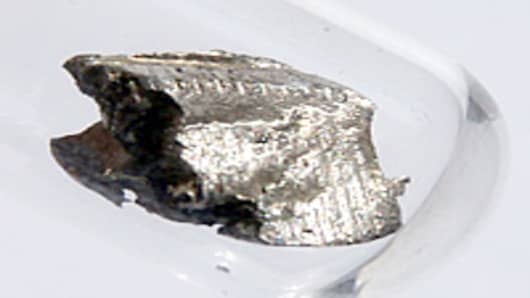A day after the United States, the European Union and Japan filed a joint complaint to the World Trade Organization against China’s export restrictions on strategic rare earth metals, the President of exploration firm U.S. Rare Earths tells CNBC that the trade case will not help solve current supply issues.
China is the largest rare earths producer, supplying over 95 percent of the world’s needs, but it has been trying to curb exports via quotas since 2010, resulting in tensions with its trade partners.
“U.S. and other industrialized democracies have actually handed China the monopoly…I think if rare earths access is the problem, I’m not sure that a WTO case is really the solution,” Dan McGroarty, President of U.S. Rare Earths, said Wednesday.
He adds that “The better way than trying to sue China…would be to develop our own [assets] in the U.S. and other Western countries, and try to even up the supply situation.”
China’s cheap production of the 17 rare earth metals saw output outside the country slump from around 60 per cent of global production to virtually nothing between 1995 and 2010, according to the U.S. Geological Survey.
But the move from China to limit exports in the past couple of years has prompted companies in other developed nations to fast track their own production of the metals. Molycorp in the U.S., and Australia’s Lynas are both due to start production in the next 12 months. Lynas’ initial forecast capacity of 11,000 tons is a little under 40 percent of China's 2011 export quota of 30,000 tons.
Mike Harrowell, Senior Resources Analyst at Sydney-based brokerage BBY, told CNBC he thinks the upcoming production will have a big impact on supply, with the two companies expected to initially start producing together around 30,000 tons a year.
The additional supply, as well as the WTO case against China could help curb the historically high prices of the metals, according to Harrowell.
“In the near term, it looks like this is a move that could result in export prices from China falling if [the WTO case] is successful,” he said.
Prices of rare earth elements have fallen as much as 75 percent from their peaks in 2011, but are still historically high. According to Lynas, prices of Lanthanum Oxide, which is a material used in making optical instruments, have fallen from their peak of $117.68 per kilogram in the third quarter of last year, to $30 per kilogram at the start of this week. But prices are still well above their 2009 average of $4.88 per kilogram.
Rare earth minerals are commonly used in high-tech manufacturing, from smartphones to electric cars.


